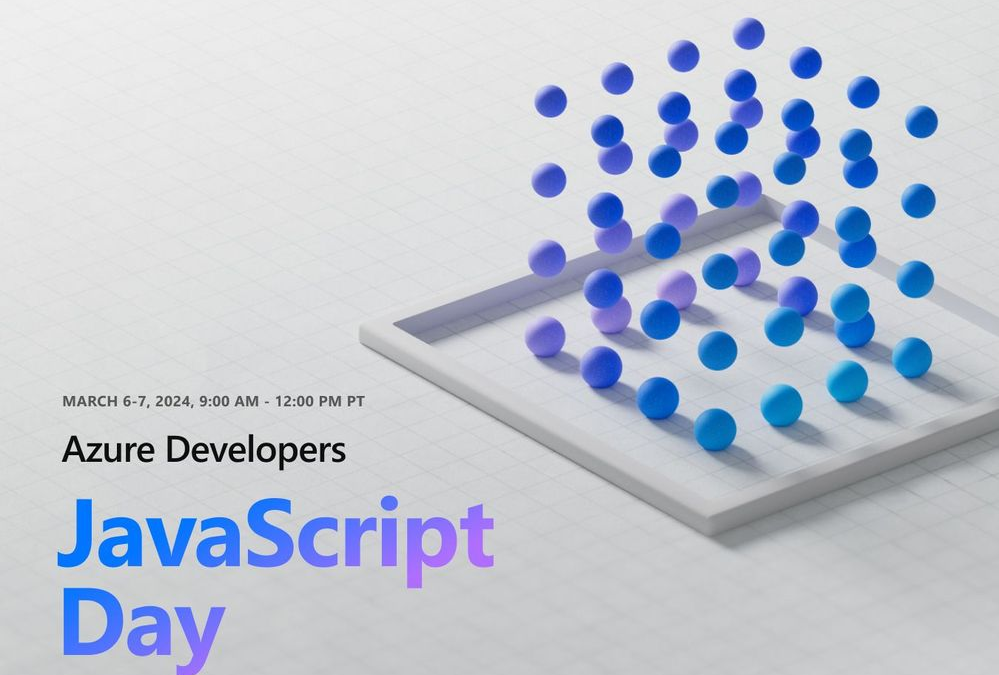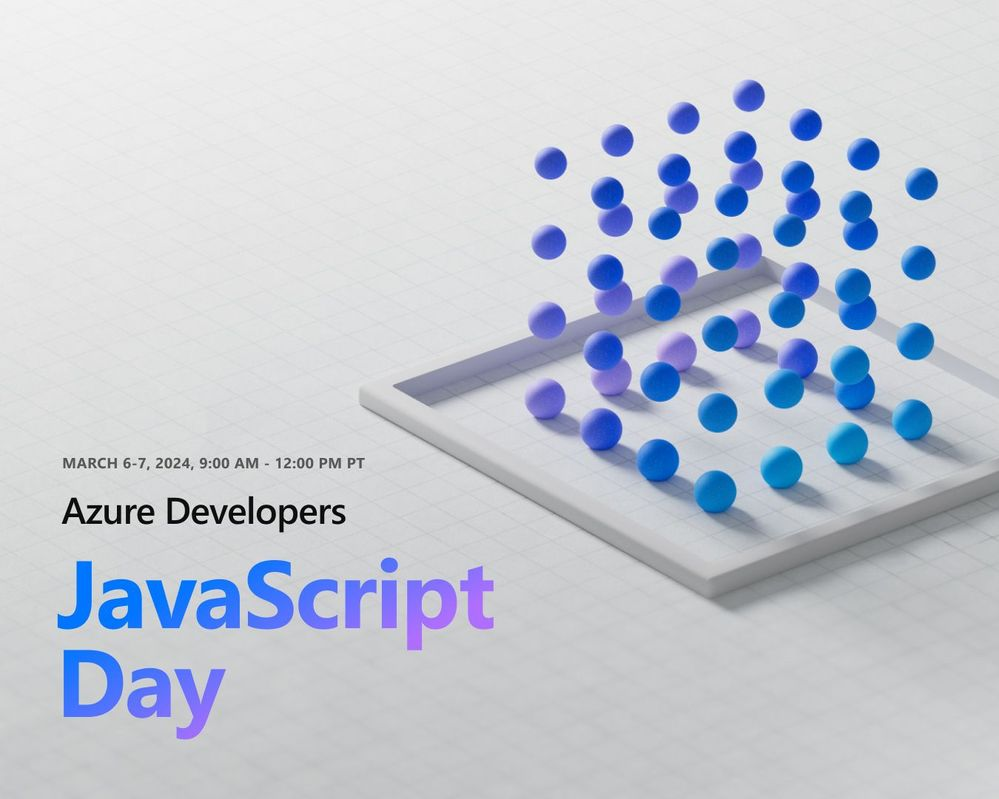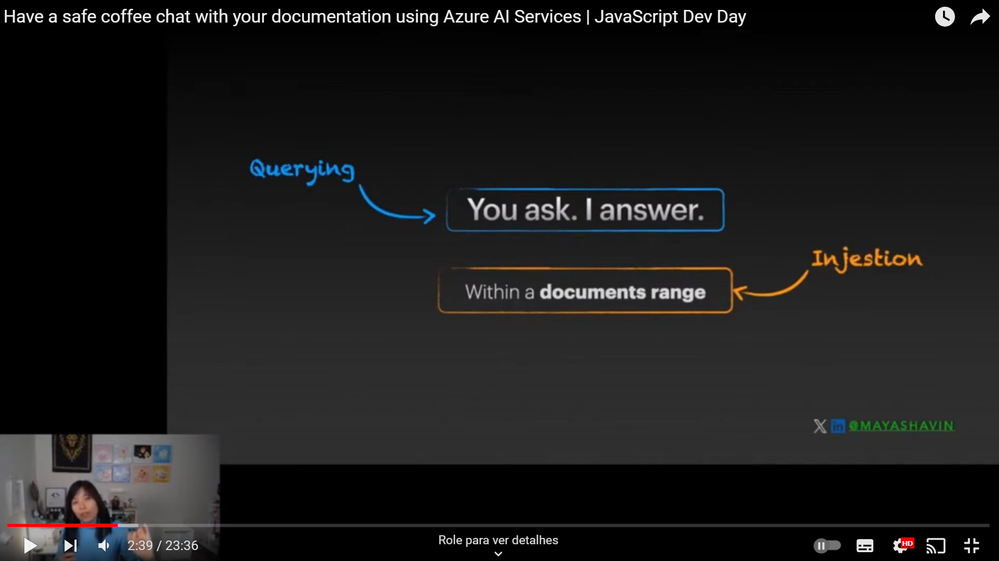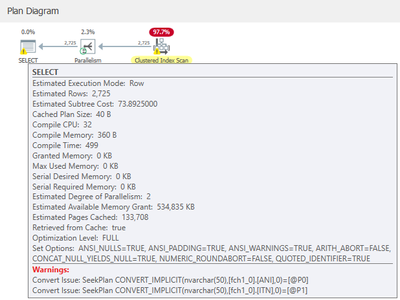
by Contributed | May 3, 2024 | Technology
This article is contributed. See the original author and article here.

In the Azure Developers JavaScript Day 2024, Maya Shavin a Senior Software Engineer at Microsoft, presented a session called “Have a safe coffee chat with your documentation using Azure AI Services”. And she introduced innovative approaches for integrating AI technologies to ensure the safety of document-based Q&A systems.
Let’s dive into the content!
What was covered during the session?
Now let’s talk about what was covered during the session! If you wish, you can watch the video of the session at the link below:
Introduction to AI-Powered Safety in Documentation
Maya opened her presentation by introducing her background in Microsoft’s industrial AI division, where she focuses on incorporating AI technologies into industry-specific applications. With over a decade of experience in both Front-End and Back-End development, she also highlighted her contributions to the Tech Community as an author and Community Organizer.
Concept of Document Q&A Assistant
Maya described the document Q&A assistant as a straightforward interaction system where an AI, not a human, responds to user queries. The system processes in two primary phases:
- Injection Phase: here, documents are uploaded, segmented, indexed with metadata and stored in a searchable database.
- Query Phase: the phase where the AI retrieves and summarizes relevant document sections in response to user queries.

The Importance of Content Moderation
A significant portion of her talk focused on content moderation, crucial for preventing inappropriate or harmful content from undermining the AI system’s integrity. She explained how AI responses could potentially reflect, or be influenced by, the offensive content within user inputs. To combat this, Microsoft promotes responsible AI practices structured around in:
- Fairness: AI systems should treat all people fairly.
- Reliability and safety: AI systems should perform reliably and safely.
- Privacy and security: AI systems should be secure and respect privacy.
- Inclusiveness: AI systems should empower everyone and engage people.
- Transparency: AI systems should be understandable.
- Accountability: People should be accountable for AI systems.
For more information on Microsoft’s Responsible AI Practices, visit the link.
Azure AI Content Safety
Maya introduced Azure AI Content Safety, a pivotal service for detecting harmful content in both user inputs and AI-generated responses. This service supports multiple programming languages and offers a studio experience for testing various content sensitivity levels. Its primary features include:
Text Analysis API: Scans text for sexual content, violence, hate, and self-harm with multi-severity levels.
Image Analysis API: Scans images for sexual content, violence, hate, and self-harm with multi-severity levels.
Text Blocklist Management APIs: The default AI classifiers are sufficient for most content safety needs; however, you might need to screen for terms that are specific to your use case. You can create blocklists of terms to use with the Text API.
To understand how Azure AI Content Safety works, there’s a video below about the service:
Demonstrating Azure AI Content Safety in Action
Maya demonstrated how to integrate Azure AI Content Safety into a JavaScript project. She showcased a function that analyzes content and adjusts responses based on predefined sensitivity levels, thus preventing the system from providing harmful output.
This function works by categorizing content into several types of sensitive material—like hate speech, sexual content, and violence—and filtering them accordingly.
She also mentioned the use of the Azure AI Content Safety SDK for JavaScript/TypeScript, which you can find at the link
Comparing Azure AI Content Safety and Azure OpenAI Content Filters
Maya also compared the Azure AI Content Safety with OpenAI’s content filtering features. She highlighted that while Azure AI Content Safety is versatile and can be integrated into various AI workflows, OpenAI’s content filtering is bundled with their services and might not incur additional costs.
However, Azure AI Content Safety offers more control over the moderation process and supports more languages.
Final Thoughts and Steps Forward
Concluding her talk, Maya stressed the ongoing need for manual oversight in content moderation to ensure that AI interactions remain appropriate and effective. She encouraged attendees to implement Azure AI content safety in their projects to enhance the security layers of their AI applications.
Maya Shavin’s session provided valuable insights into the mechanisms of safeguarding AI-driven document assistants, ensuring that they operate within the realms of safety and ethics dictated by modern AI standards.
Azure Developers JavaScript Day Cloud Skills Challenge
Don’t forget to participate in the Azure Developers JavaScript Day Cloud Skills Challenge to test your knowledge and skills in a series of learn modules and learn more about Azure services and tools. As I mentioned in the previous articles, besides the challenge is over, you can still access the content and learn more about the topics covered during the event.

Link to the challenge: JavaScript and Azure Cloud Skills Challenge
Additional Resources
If you want to learn more about Azure AI Content Safety Services, especially if you’re JavaScript Developer, you can access the following resources:
Stay Tuned!
If you wish, you can follow what happened during the two days of the event via the playlist on YouTube. The event was full of interesting content and insights for JavaScript developers!
If you are a JavaScript/TypeScript developer, follow me on Twitter or LinkedIn Glaucia Lemos for more news about the development and technology world! Especially if you are interested in how to integrate JavaScript/TypeScript applications with the Azure, Artificial Intelligence, Web Development, and more!
And see you in the next article!

by Contributed | May 2, 2024 | Technology
This article is contributed. See the original author and article here.
We are excited to announce the release of Single Sign-On (SSO) for the Defender for IoT Sensor Console! This powerful feature simplifies the login process, enhances security, and provides a seamless experience for all users. Let’s dive into the details:
What’s New?
SSO Support on the sensor console
With SSO, users can log in once and gain access to the sensor console without the hassle of re-entering credentials.
 Figure 1: Defender for IoT login page
Figure 1: Defender for IoT login page
New integration with Microsoft Entra ID
By using Entra ID, your organization ensures consistent access controls across different sensors and sites. SSO simplifies onboarding and offboarding processes, reduces administrative overhead, and strengthens security.
Getting Started
Ready to set up SSO for your sensor console?
Follow this step-by-step guide by visiting our documentation: Set up single sign-on for Microsoft Defender for IoT sensor console.
Learn More
What’s new in Microsoft Defender for IoT?
Get ready to experience enhanced security and seamless access with SSO for the Sensor Console. If you have any questions, feel free to comment below!

by Contributed | May 1, 2024 | Technology
This article is contributed. See the original author and article here.

Get ready for the pinnacle of startup innovation as the Imagine Cup World Championship unfolds live at Microsoft Build on May 21! Three outstanding startups from across the globe are poised to showcase their AI-solutions on the global stage, vying for the coveted title and a chance to win USD100,000 and a mentorship session with Microsoft Chairman and CEO, Satya Nadella.
Since the start of the 2024 season back in October, the competition has been a journey of collaboration with expert mentors and growth for participating startups. From a pool of tens of thousands of applications, the field was narrowed to the elite semifinalists, and now, only three world finalists remain.
As the anticipation mounts for the grand finale, our esteemed panel of judges face a daunting task. Drawing on their industry expertise and personal insights, they will meticulously evaluate each startup’s pitch and engage in Q&A sessions. Their evaluation criteria extends beyond mere innovation to encompass the responsible use of AI technology, accessibility for all users and the fundamental business viability of each startup.
The culmination of this journey promises to be nothing short of spectacular. Live on the global stage, the judges’ decision will be unveiled, determining the ultimate champion of the 2024 Imagine Cup!
But who are the discerning minds tasked with determining the 2024 World Champion?
Let’s meet the judges!

Ali Partovi
CEO, Neo; Co-founder of Code.org
Ali Partovi heads Neo, a startup accelerator, diverse mentorship community, and VC fund that helps tomorrow’s tech leaders maximize their potential. Ali invests in people smarter than himself and has backed Airbnb, Dropbox, Facebook, & Uber.
He grew up in Tehran during the Iran-Iraq war, attended Harvard, and sold his first startup, LinkExchange, in 1998. He co-founded Code.org (#HourOfCode) to bring Computer Science to classrooms. He’s passionate about education and loves climbing, guitar, puzzles, and family.

Annie Pearl
Microsoft Corporate Vice President of Ecosystems
As Microsoft Corporate Vice President of Ecosystems, Annie Pearl leads a globally-distributed organization that empowers current and future customers to discover and engage with AI capabilities on the Microsoft Cloud. Teams under her oversight develop and build on platforms, such as Founders Hub and Microsoft Learn, to reach new audiences, skill them on Microsoft’s technology, and help them build the most innovative and AI-driven solutions.
Annie joins Microsoft with +15 years of tech leadership experience in both startup ventures and established enterprises. She served as the Chief Product Officer at Calendly, a premier scheduling automation platform. There, she led the end-to-end strategy and execution of the product vision and roadmap. Under her guidance, Calendly achieved remarkable growth, solidifying its position as the leading scheduling automation tool in the market.
Before her tenure at Calendly, Annie held the role of Chief Product Officer at Glassdoor, where she shaped the product vision and user experience for millions of job seekers and employers worldwide. Earlier in her career, she led Enterprise product teams at Box, contributing to its trajectory both before and after its 2015 IPO. Notably, Annie also played a pivotal role as the VP of Product and a founding team member at Xpert Financial, an early-stage financial services startup.
Annie started her career as a Lawyer and held roles in management consulting before transitioning to the tech industry.

Elnaz Sarraf
Founder & CEO ROYBI (Roybi Robot & RoybiVerse)
Elnaz is a successful entrepreneur and CEO, renowned for her innovations in the field of EdTech, AI, and Robotics. She is the founder of ROYBI® Robot, an AI-powered smart toy that teaches children language and STEM skills. This groundbreaking product has won several prestigious awards, including being named one of TIME Magazine’s Best Inventions in Education and winning the World Economic Forum smart toy award.
With over 15 years of experience as a serial entrepreneur, Elnaz has established herself as a leader in the industry. As the CEO of ROYBI, an investor-backed EdTech company, she has raised millions in funding to focus on early childhood education and self-guided learning through artificial intelligence.
Elnaz’s journey to success has been shaped by her early experiences growing up as a woman in Iran, where opportunities were limited. However, her drive and passion for entrepreneurship led her to the U.S., where she has significantly contributed to the tech industry. Her achievements include being selected as Inc. Top 100 Female Founders, Nasdaq Entrepreneurial Center Milestone Maker, named the Woman of Influence by Silicon Valley Business Journal, and Entrepreneur of The Year in Silicon Valley.
_________
Whether you’re a tech enthusiast, aspiring entrepreneur, or simply someone who loves to witness the inspiring passion and innovation of students – this is an event you won’t want to miss! Gain insights into cutting-edge use cases of AI technology and discover how these startups are shaping the future to make a real impact on the world.
Tune in, cheer for your favorites, follow along, and get inspired by the ingenuity of these student founders.
Mark your calendars for May 21 to witness this moment!

by Contributed | Apr 30, 2024 | Technology
This article is contributed. See the original author and article here.
Introduction
When migrating from Oracle to SQL Server, Azure SQL Database or Azure SQL Managed Instance, an application using the Microsoft JDBC Driver for SQL Server is often used to avoid re-writing the application. However, after migration it’s often discovered that performance is not the same as it was when the data was on Oracle. Optimizations are necessary for query tuning due to the distinct behaviors of the two database engines.
An unnoticed yet significant issue arises from implicit conversions due to JDBC driver settings, leading to performance degradation. This blog seeks to highlight this easily overlooked problem, offering solutions to ensure optimal performance with SQL backend while preserving the JDBC application.
How to Detect Implicit Conversion
Obtain execution plans for your most CPU-intensive queries by enabling the query store. Be aware that implicit conversions might be happening in smaller queries with high execution counts, even if they don’t individually consume significant resources. An easy way to identify the type conversion is given in this blog.
Looking at the execution plan you would see something like this:

While if you look at the statement text, you will see that the JDBC Driver presents the statement like this, which looks innocuous:
(@P0 nvarchar(4000),@P1 nvarchar(4000))select col1, col2 from table1 where col1 = @P0 ….
Nevertheless, implicit conversion will result in queries consuming more CPU resources than anticipated, hindering the scalability of your application. Implicit conversion occurs when the data types of SQL Server columns differ from those presented by the parameter data types of the JDBC driver. Typically, SQL columns are configured with varchar(x) to conserve space compared to Nvarchar(x), while the JDBC driver defaults to transmitting strings as Unicode.
Preventing Implicit Conversion with JDBC Driver
You have two options to choose from based on ease of implementation:
- Change the underlying SQL Server column types to align with the parameter datatype. However, this may not be ideal as Nvarchar occupies more space, and altering SQL column types entails significant design changes.
- For applications utilizing JDBC, utilize a driver connection property known as “sendStringParametersAsUnicode.” This setting determines whether strings are sent to SQL as Unicode parameters or not. It’s the recommended option. If your SQL column datatypes involved in implicit conversion are varchar, set the value to false.
Once this is implemented, check the query plan again. If the value of the “sendStringParametersAsUnicode” setting is false, the parameters presented by the driver will show up as follows:
(@P0 varchar(4000),@P1 varchar(4000))select col1, col2 from table1 where col1 = @P0 ….
As the underlying SQL column types are also varchar, there is no implicit conversion, leading to improved performance and reduced CPU usage!
You can find a list of all the JDBC driver settings here.
Feedback and suggestions
If you have feedback or suggestions for improving this data migration asset, please send an email to Databases SQL Engineering Team.
by Contributed | Apr 29, 2024 | Technology
This article is contributed. See the original author and article here.
Whether you are running a startup or an already thriving small business, harnessing AI-driven solutions will help you discover new opportunities, streamline operations, and make data-driven decisions with confidence. Understanding and exploring the possibilities of AI is essential for small businesses and key to unlocking growth, driving innovation, and maintaining a competitive edge.
The first step is understanding the potential of AI for your business. Microsoft has developed several online resources to help. In recognition of National Small Business Week, we have curated a list of those resources that may be helpful for small business professionals who want to get started with AI.
Establish an AI foundation
Start your AI journey by visiting the Microsoft WorkLab and examining a rich collection of content that addresses the real-world scenarios of how AI is impacting work today. New articles are regularly added that will help you understand not just AI’s high-level capabilities, but also the nuances of AI and how to directly apply AI to your day-to-day work. Key resources include:
Build your AI skills
When you’re ready to build a deeper AI skill, you explore the Microsoft AI Learning Hub. You’ll find a variety of tools to help you go from understanding AI to preparing for it. You can learn the mechanics of using the technology and even how to build it into your own apps and services.
Start with the learning journey for Business Users, which is foundational for getting an underlying understanding of AI, and then move into a more detailed guidance on how to use and implement its capabilities. If you’re an IT professional, look at the learning journey for IT Professionals, which provides a thorough grounding on the particulars of AI adoption, deployment, and small business concerns, like data classification and regulatory considerations.
To define your own path, get skilling recommendations based on your job responsibilities and objectives. No matter where you want to go, you can use the AI learning assessment to define a customized learning journey to get you there.
Put AI to work
To put your AI skills into practice or if you’re already using Copilot for Microsoft 365, visit the Microsoft Copilot Lab. This site provides easy, visual introductions into what Copilot is and how it helps you do more no matter which Microsoft 365 app you are using. These tools are designed for professionals that need a fast, tactical grounding so they can benefit from AI every day.
One example is the prompt writing guide, which explains how to write effective prompts so Copilot can deliver exactly what you need. This toolkit teaches the art and science of prompting. It walks through a series of easy initial prompting exercises like writing an AI-powered email or creating an image, so you’ll understand how to edit a prompt to tailored it to your scenario.
Microsoft Learn has a series of freely available, advanced courses to help you gain a deeper understanding of Copilot, how it works with the apps in Microsoft 365 and best practices for everyday use.
Get started
National Small Business Week may be an annual event, but you can build your AI skills year-round. Join the Microsoft SMB Tech Community to network with other professionals using Copilot. You can come here anytime to ask questions, get help, keep up with the latest AI news specific to small and medium-sized businesses and find out about upcoming online or local events.


Recent Comments